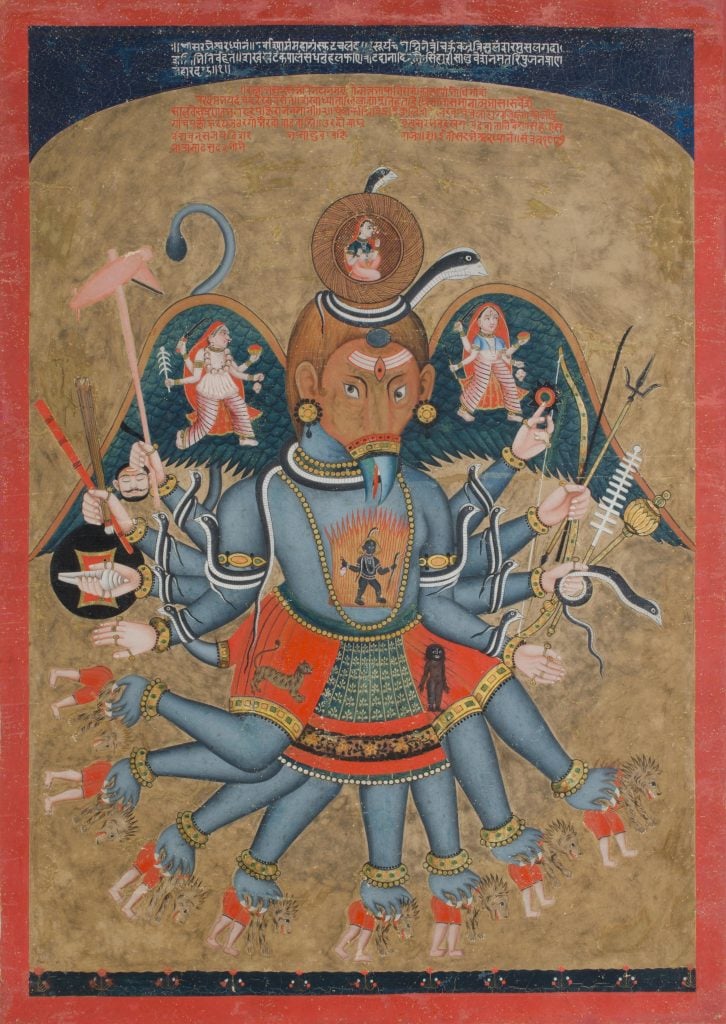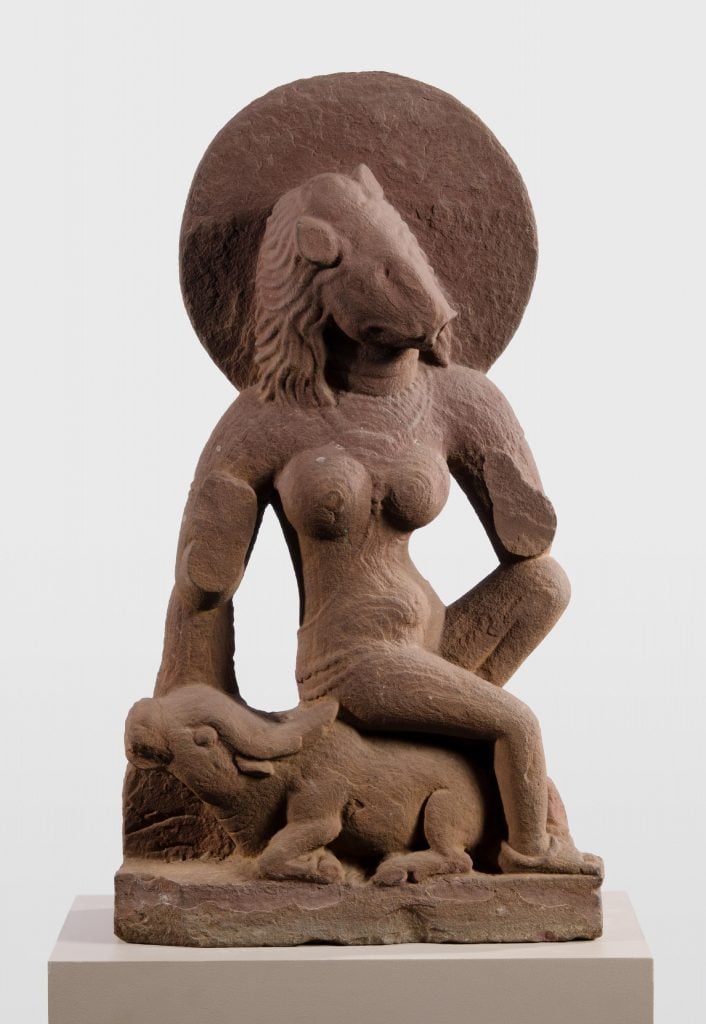
22 Dec Ancient Mythical Beasts Come Alive at This South Asian Art Exhibition
Source Credit: Content and images from Artnet News. Read the original article - https://news.artnet.com/art-world/mythical-divine-animals-south-asian-art-pma-2584538
The Jigoku-zoshi (“Handscrolls of Buddhist Hell”) is a Japanese scroll from the late 12th century that graphically depicts naked, horrified monks running away from bands of vicious, animal-headed demons engulfed in flames.
Someone with limited knowledge of art history and the Buddhist religion might assume that the animalistic demons are the antagonists of this story, but it’s actually the monks who are at fault. That’s because the Jigoku-zoshi depicts the principle of treating all beings with respect and kindness—a principle these monks have failed to uphold, hence their being sent to hell.

Unknown, Shiva in the Form of Sharabha, Tantric Painting of Garuda (1830). Photo: Gift of Herbert Gordon Zahn, 1978.
The Jigoku-zoshi exemplifies the varied roles that animals and animal-related imagery play in Asian art, from Indian statues to Japanese scrolls. Those who wish to know more about this topic should consider paying a visit to the Philadelphia Museum of Art’s ongoing exhibition, “Mythical, Divine, Demonic: Animal Imagery in South Asian Art,” open until February 9, 2026.
“Animals,” the museum’s website explains, “appear everywhere in the art of South Asia,” a part of the globe that includes India, Pakistan, Bhutan, Nepal, and Bangladesh. Unlike medieval Christian art from Europe, the animals seen in South Asian art rarely represent themselves. More often than not, they are the incarnations of gods, their adversaries, or their trusty companions, bringing either bounty or destruction to the mortal realm.
“Mythical, Divine, Demonic” takes specific animals—notably the lion, serpent, man-eagle, and chimera—and looks at the different meanings and identities that artists from various South Asian cultures and time periods have ascribed to them.

Unknown, Dancing Six-Armed Ganesha (9th century). Photo: Philadelphia Museum of Art / The Luther W. Brady Collection.
The exhibition was curated by Neeraja Poddar, the Philadelphia Museum of Art Ira Brind and Stacey Spector Associate Curator of South Asian Art, and a research fellow at the Oxford Centre for Hindu Studies. Her interests range from ancient Hindu manuscripts to Nepalese painting traditions.
The first thing visitors will learn as they explore the exhibition is that South Asian cultures regard animals rather differently than the Christian, materialist West, which maintains a clear separation between the human world and the animal, which the former must conquer, control, and cultivate.

Unknown, The Goddess Varahi (c. late 5th – early 6th century). Photo: Philadelphia Museum of Art / Purchased with the W. P. Wilstach Fund, 1977.
Conversely, Hindu and Buddhist cultures tend to see the human and animal world as part of a unified whole. Both religions believe in the idea of reincarnation, including humans reincarnating into animals and vice versa. Given this connection, it should come as no surprise that many Hindu gods and goddesses like Vishnu frequently assume animal or part-human, part-animal forms.
“Mythical, Divine, Demonic” features many paintings and statues depicting such manifestations. For example, a clay statue from the late 5th or early 6th century represents the Goddess Varahi, the female counterpart of Vishnu’s boar avatar, Varaha. Varahi also has the face of a boar or sow, but the body of a human.

Unknown, Ceremonial Cover (Rumal): Vishnu on the Cosmic Ocean (1700-1800). Photo: Philadelphia Museum of Art / Stella Kramrisch Collection, 1994.
Many scholars regard Hinduism as one of the world’s oldest religions, so it is difficult to ascertain what specific animals were originally meant to represent. That said, boars are generally associated with wildness and overcoming challenges. This is fitting, considering Vishnu is said to have turned into Varaha to defeat a powerful demon named Hiranyaksha.
Also featured in “Mythical, Divine, Demonic” is a painting of Shiva in the form of Sharabha, produced around 1830. In Hindu iconography, this chimera is an amalgamation of different animals, and is arguably the most powerful of Shiva’s many incarnations. In this case, it is a part-bird, part-lion hybrid with eight legs, thus demonstrating just how complex and varied the coded animal motifs within South Asian art can be.
“Mythical, Divine, Demonic: Animal Imagery in South Asian Art” is on view at the Philadelphia Museum of Art, 2600 Benjamin Franklin Pkwy, Philadelphia, through February 9, 2026.
Source Credit: Content and images from Artnet News. Read the original article - https://news.artnet.com/art-world/mythical-divine-animals-south-asian-art-pma-2584538

